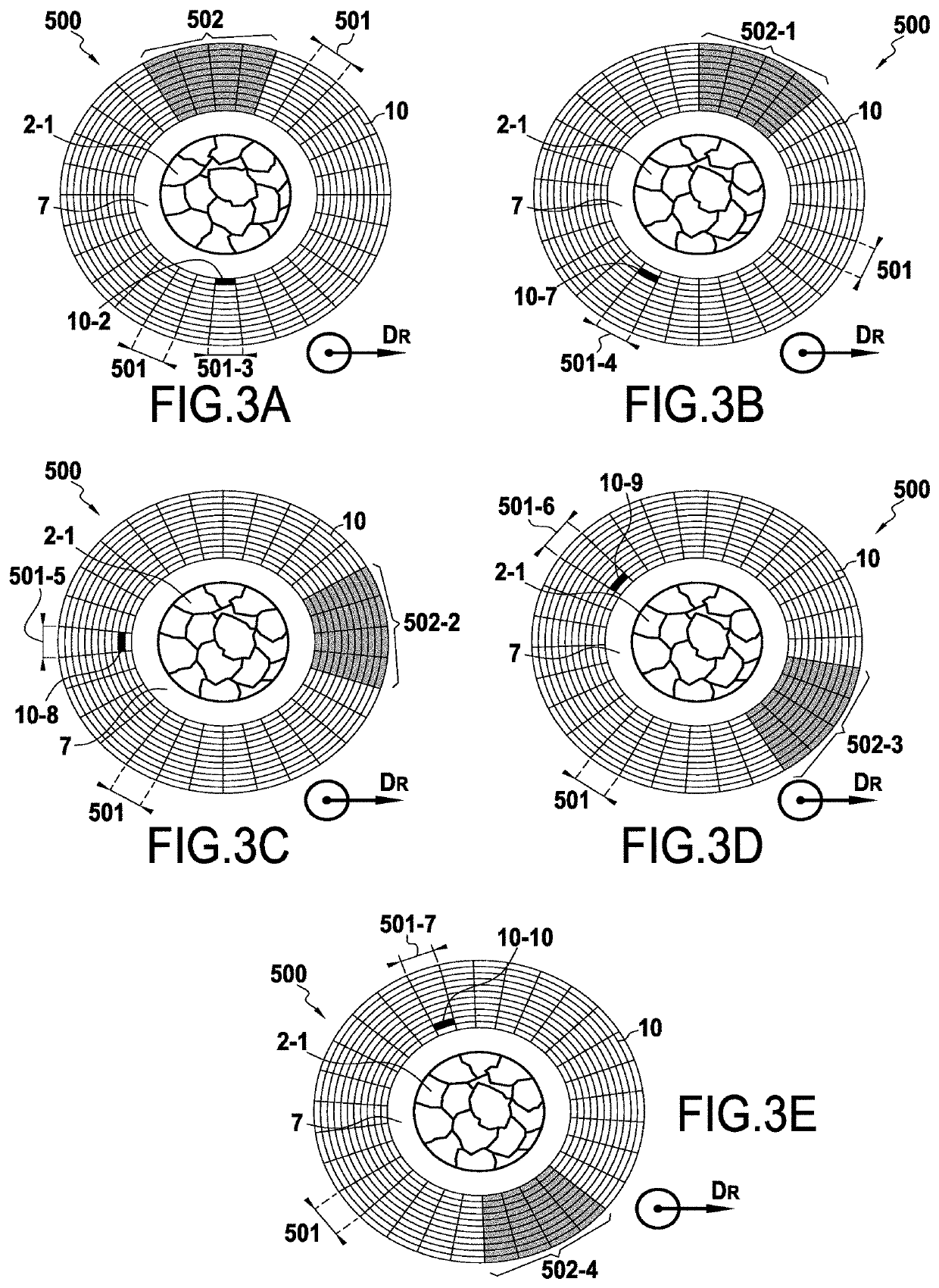A device and a method for non-destructively characterizing a material
a non-destructive characterization and material technology, applied in measurement devices, mechanical vibration separation, instruments, etc., can solve the problems of limited solution, inability to use elements, and inability to meet the requirements of all transducers, so as to reduce the number of emitter/receiver cells, reduce the overall size, and improve the accuracy of measurement
- Summary
- Abstract
- Description
- Claims
- Application Information
AI Technical Summary
Benefits of technology
Problems solved by technology
Method used
Image
Examples
Embodiment Construction
[0038]FIG. 1 shows a device 100 for non-destructive characterization by ultrasound waves in order to determine the characteristics of a material 2. The device 100 comprises an ultrasound transducer 1, i.e. a probe, having a plurality of emitter / receiver cells 10. Each emitter / receiver cell 10 may be switchable into an emit mode for emitting ultrasound waves towards the material 2 for characterizing, or into a receive mode for receiving ultrasound waves that have been transmitted and / or guided through said material 2. The transducer 1 is associated with control means 3 suitable for selecting and switching any cell 10 of the ultrasound transducer 1 into an emit mode, into a receive mode, or indeed to leave the cell 10 inactive. In the example shown, and as described in greater detail below, the control means 3 have switched one cell 10-1 (the cell marked in black) into emit mode and a set 20 of cells 10, specifically eleven cells, into receive mode (cells marked in gray), while the ot...
PUM
| Property | Measurement | Unit |
|---|---|---|
| DA | aaaaa | aaaaa |
| time | aaaaa | aaaaa |
| anisotropic | aaaaa | aaaaa |
Abstract
Description
Claims
Application Information
 Login to View More
Login to View More - R&D
- Intellectual Property
- Life Sciences
- Materials
- Tech Scout
- Unparalleled Data Quality
- Higher Quality Content
- 60% Fewer Hallucinations
Browse by: Latest US Patents, China's latest patents, Technical Efficacy Thesaurus, Application Domain, Technology Topic, Popular Technical Reports.
© 2025 PatSnap. All rights reserved.Legal|Privacy policy|Modern Slavery Act Transparency Statement|Sitemap|About US| Contact US: help@patsnap.com



